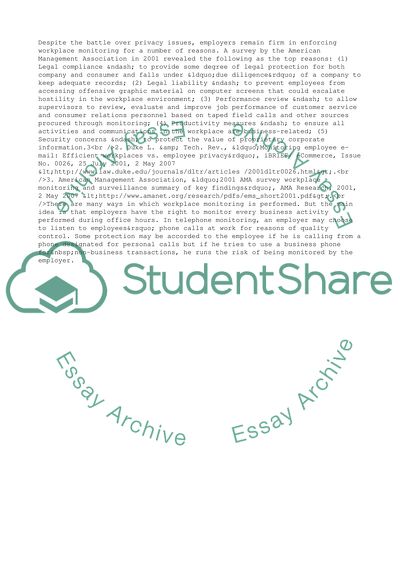Cite this document
(Workplace Monitoring Article Example | Topics and Well Written Essays - 2000 words, n.d.)
Workplace Monitoring Article Example | Topics and Well Written Essays - 2000 words. https://studentshare.org/management/1540428-workplace-monitoring-how-much-is-too-much
Workplace Monitoring Article Example | Topics and Well Written Essays - 2000 words. https://studentshare.org/management/1540428-workplace-monitoring-how-much-is-too-much
(Workplace Monitoring Article Example | Topics and Well Written Essays - 2000 Words)
Workplace Monitoring Article Example | Topics and Well Written Essays - 2000 Words. https://studentshare.org/management/1540428-workplace-monitoring-how-much-is-too-much.
Workplace Monitoring Article Example | Topics and Well Written Essays - 2000 Words. https://studentshare.org/management/1540428-workplace-monitoring-how-much-is-too-much.
“Workplace Monitoring Article Example | Topics and Well Written Essays - 2000 Words”. https://studentshare.org/management/1540428-workplace-monitoring-how-much-is-too-much.


